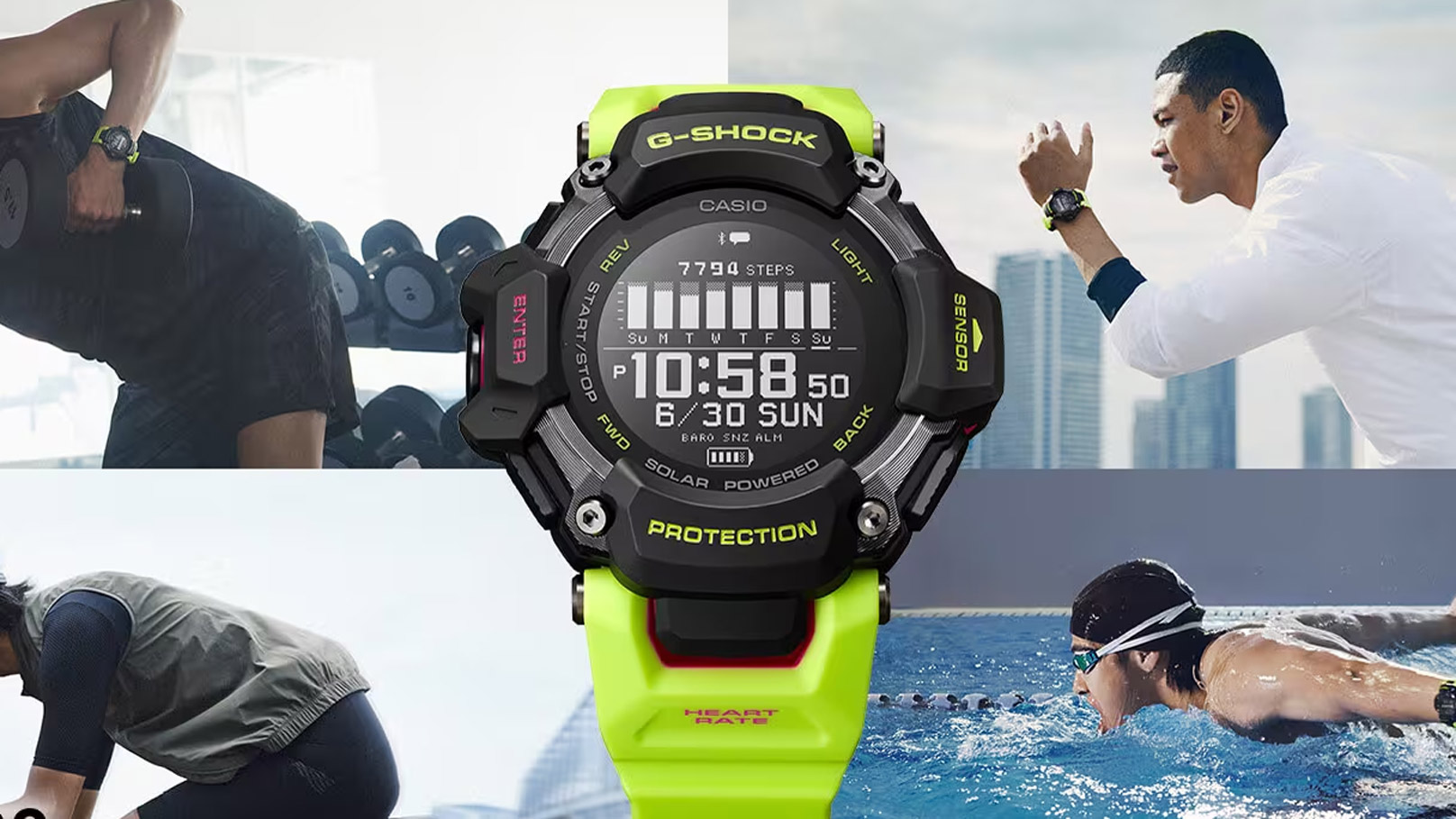This smart Casio G-Shock is the Garmin beater I've been waiting for

The Casio G-Shock G-SQUAD line of watches are sports watches at their heart, equipped with simple, effective training tools. Last year’s revamp of the line offered step counts and running pace tracking, calories burned, and a dedicated stopwatch for interval workouts. Sometimes it’s more useful to pare things down, so you can focus on your watch.
Connecting to your phone to share some of these metrics via Bluetooth, it was a good activity tracker without all the noise associated with a smartwatch - plus it lasts for seven years and is cheaper than most of the best smartwatches.
However, G-Shock just got a whole lot smarter. After the release of the GBD-H1000 series, which used Google’s Wear OS as a basis, the new G-SQUAD GBD-H2000 line uses Polar’s advanced suite of tracking technology, as the Finnish sports hardware company shares its fitness tracking algorithms with Casio for the first time.
The GBD-H2000 offers an optical heart rate sensor, built-in GPS functionality (incredible for a digital watch!), and a built-in compass, gyroscope, altimeter, temperature sensor, and accelerometer. In short, it’s can offer many of the workout and GPS tracking services of a traditional smartwatch, but without the constant noise of apps and notifications.
It also removes a lot of extraneous features, giving you only what you need. It looks far cooler than your average fitness tracker with its rugged, shock-resistant carbon fiber case, and packs an eco-friendly band made of corn-based biomass plastic rather than silicon.
The watch offers around 16 hours of continuous workout usage with GPS and heart rate monitoring, and a hefty two months of battery life in watch mode with the heart rate measurement off. If you work out regularly, expect to charge the watch once every three weeks or so, depending on how long you’re out in the sun.
No price has officially been announced for US, UK, and AU territories just yet but the G-Central blog is reporting it will be available for $399 in the US, which is around £329 or AU$600.
Sign up for breaking news, reviews, opinion, top tech deals, and more.
Analysis: A Garmin Instinct Crossover rival
When I reviewed the Garmin Instinct Crossover at the end of December, I said it was the “smart Casio G-Shock of my dreams” loving the rugged adventure aesthetic and lack of smartwatch ‘noise’ in the design. I also predicted a general shift away from smartwatches being yet another screen on our wrists, based on the amount of screenless wearable tech we saw at CES 2023.
Lo and behold, Casio G-Shock and Polar have proved me right. GPS is just too useful for modern adventure watches to go without them, and Casio has seen this and used Polar’s reputable suite of GPS and fitness tracking algorithms in its classic rugged G-Shock frame.
This is the Garmin Instinct Crossover’s real competition: an old-school digital activity watch from the masters at Casio, hiding new-school smarts thanks to its partnership with Polar. Watches like the Vantage V2 and Polar Pacer Pro prove the Finnish company's fitness credentials, with its heart rate and running power metrics, in particular, offering Casio a solid smart-tech foundation.
When the G-SQUAD and G-LIDE lines were refreshed last year, I said the resurgence might “make digital watches cool again”. Well, I think we’re here. We’re seeing Casios on the wrists of tastemakers and appearing in GQ’s style pages. But what I really wanted is to avoid another black mirror in my life, a way to continue to level up my athletic performance without getting information overload. The Garmin Instinct Crossover delivered, and it looks like the GBD-H2000 is about to do the same.
However, Meta seems to be pioneering a smartwatch which is very much the opposite, designed to pipe information to your eyes with the help of AR glasses.

Matt is TechRadar's expert on all things fitness, wellness and wearable tech.
A former staffer at Men's Health, he holds a Master's Degree in journalism from Cardiff and has written for brands like Runner's World, Women's Health, Men's Fitness, LiveScience and Fit&Well on everything fitness tech, exercise, nutrition and mental wellbeing.
Matt's a keen runner, ex-kickboxer, not averse to the odd yoga flow, and insists everyone should stretch every morning. When he’s not training or writing about health and fitness, he can be found reading doorstop-thick fantasy books with lots of fictional maps in them.